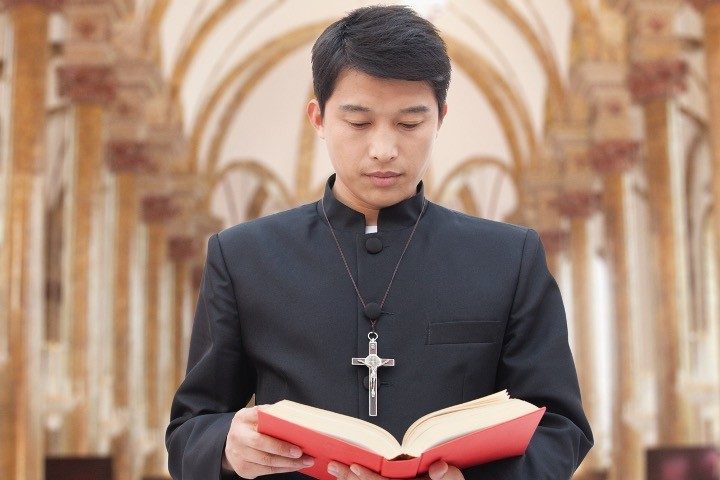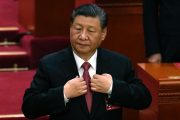
SINGAPORE — 2018 witnessed the signing of the Sino-Vatican deal between the Roman authorities and the Chinese Communist Party (CCP), arguably in a bid to tackle the status of the underground church in China. Yet the CCP’s suppression of Christians, regardless of denomination, has continued unabated.
A report by Texas-based ChinaAidindicated that there were 1,256 cases of religious persecution in 2017, up 66 percent from 2016. However, the very same year the Sino-Vatican accord was inked, state sanctions on Christian activities began to escalate. A U.S. Commission on International Religious Freedoms (USCIRF) annual report posited that 5,000 Protestants and 1,000 church leaders were arrested for faith-linked activities in 2018. Such arrests were in addition to the demolition of thousands of churches across China. “In Henan province, local authorities required churches to remove the first commandment from the list of the Ten Commandments on the ground that it placed loyalty to God above loyalty to the CCP,” the report read.
Since the People’s Republic of China came into being in 1949, the CCP has tried many times to clamp down on religious activities. For instance, the Legion of Mary that was brought into China in 1937 was identified by despot Mao Zedong as “Public Enemy No. 1.”
When Fr. Aedan McGrath, a Columbian Father tasked to spread the Legion of Mary in China, introduced the group to the communists as a spiritual organization, their reply was, “This is a great organization, just like Communism.”
It is noteworthy that there did exist similarities between the Legion of Mary and international communism. Each implemented the nomenclature of the Roman legion, and both used the term “Praesidium” to refer to their group and group meetings. Also, the legion’s color is red, just like that of the communists.
During the subsequent years of communist rule in China, Christianity was increasingly “sanctioned,” and churches had to be classified as “patriotic” associations, failing which they were deemed unlawful by the regime and even persecuted. Still, unauthorized Christian denominations persisted in operating against the whims of the party. These groups ranged from clandestine gatherings to groups that ran more openly but cautiously.
Recent restrictions on Christian practices began to intensify in 2018, the same year the accord with the Vatican was signed. Several churches were closed down — mostly unsanctioned ones but also some officially recognized groups. Thousands of churchgoers have been detained, with some high-profile Protestant clergy being issued lengthy prison sentences. As a result, more than half of China’s Protestants have moved their worship to underground church gatherings to eschew government threats.
In one case, authorities removed the crosses that bedecked around 1,700 churches in Zhejiang province, saying that the crosses violated building codes. Government officials also have been gathering more details of worshippers, adding to prejudices in employment, particularly in official posts. All children under age 18 have been stringently barred from having any type of religious education — a ban that was hitherto not strictly implemented.
Additionally, some Catholic churches have witnessed the replacement of icons of Jesus or the Virgin Mary with portraits of Chinese President Xi Jinping. Religious leaders now have to devote their time and efforts to promoting the CCP and Xi.
In a speech on religious policy, Xi stated: “We must resolutely guard against overseas infiltrations via religious means and prevent ideological infringement by extremists.” The authoritarian leader then insisted all religious groups kowtow to the CCP and that religions must become more Chinese, or “Sinicized.”
At the National Religious Work Conference in 2016, Xi claimed that to “actively guide the adaptation of religions to socialist society, an important task is supporting China’s religions’ persistence in the direction of Sinicization.”
This prompts the question of why a powerful and dominating organ like the CCP would feel challenged by Christianity, an imported religion in China.
In 2015, The Guardian’s Andrew Brown reported that just like King Henry VIII, who sought to usurp control of Catholicism in England, the CCP has been attempting to control Christianity in China. Protestantism is the dominant form of Christianity in China. “The decentralized structure of this form of Christianity helps it to grow and spread, but also makes it much harder for governments to cut lasting deals with it,” Brown wrote.
The aforementioned attacks on Christian practice in China were not unprecedented. After all, Chinese imperial dynasties’ relationships with religion were often characterized by distrust and outright hostility. For instance, China’s Tang dynasty in the ninth century, under Emperor Wuzong, saw the emperor trying to get rid of Buddhism, Nestorian Christianity, and Manichaeism. China’s apparent obsession with “foreign” religions can be traced back to the 19th century Qing dynasty, when Christianity and missionaries were closely associated with Western imperial powers dividing and tearing apart the Chinese empire, during what Chinese historians term the “century of humiliation.” To make matters more complicated, an idiosyncratic Chinese Christian leader who preached his own localized version of Christianity spearheaded the Taiping Rebellion against Qing rule, thus intensifying the Chinese elite’s fears of Christianity.
As decades of CCP rule have shown, the eventual aim of the party appears to be a clampdown of any type of religious, ideological, or ethnic allegiance that might undermine the CCP’s claims to authority. Christianity seems to be the most prevalent type of identity feared by the CCP as a challenge to its grip on power.
A Freedom House report in 2017 stated that there were about a hundred million Christians in the country alone — that figure surpassed the 90-million membership of the CCP in that year. With the various denominations of Protestantism as well as the Catholic faith in China, the CCP has felt threatened by these groups, especially amid historical precedents that saw how the Catholic Church led to the collapse of communist-led Poland and other Eastern European countries. Indeed, the collapse of the Soviet regime reflected public rejection of the sort of Marxism-Leninism that is still the official doctrine of the CCP today.
Notably, while communist rhetoric in China has tended to wax lyrical on serving the people and the virtue of self-sacrifice, the reality of life under communist rule testifies otherwise. Years of power-hungry politicians, draconian state rulings such as Xi’s recent zero-Covid measures, and persecution of minorities in Xinjiang province have led many Chinese to question and even repudiate the party ideology. More and more Chinese are becoming increasingly aware of the hypocrisy and double-standards of the CCP, especially after years of brutal Covid-19 lockdowns.
With a religious vacuum resulting from years of atheistic communism, the erosion of China’s socialist values in light of former leader Deng Xiaoping’s economic maneuvers in the 1980s, and diminishing confidence in the ruling party’s ability to lead the country, many Chinese are seeking moral direction within the various forms of Christianity.
It is no surprise that the CCP still regards Christianity as a force to be reckoned with. Given its authoritarian and harsh rule, the CCP’s leaders have rarely shown their ability to compromise with the needs of ordinary Chinese. Most likely, Christians who have been facing long-standing persecution may be even more dogged in their efforts to resist state propaganda.
Due to the increasing exposure of Chinese to foreign ideas, including religions like Christianity, the CCP has been taking — and will likely continue to take — steps to guarantee that the party will always supersede God and religion, at least among ordinary Chinese.



